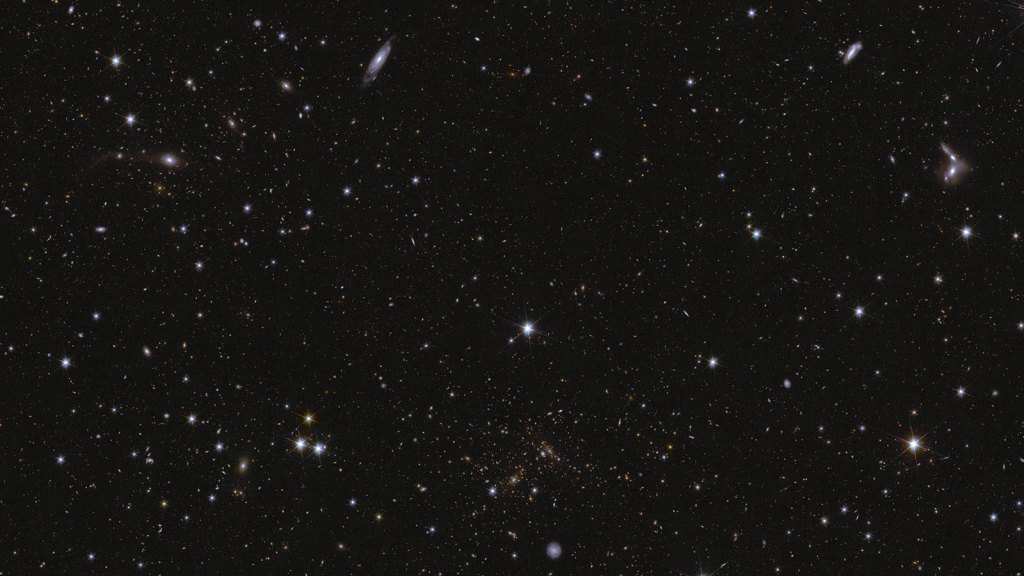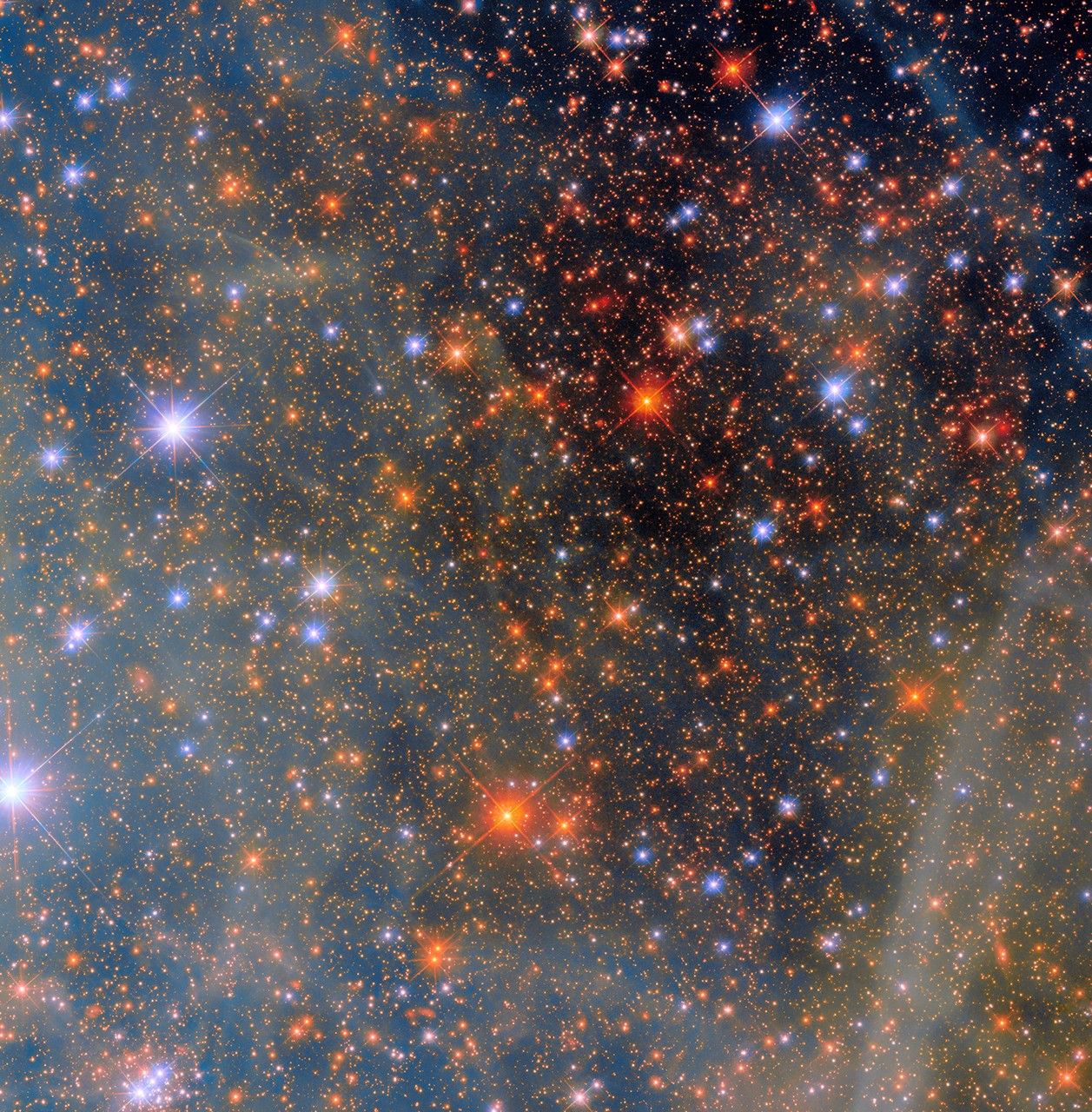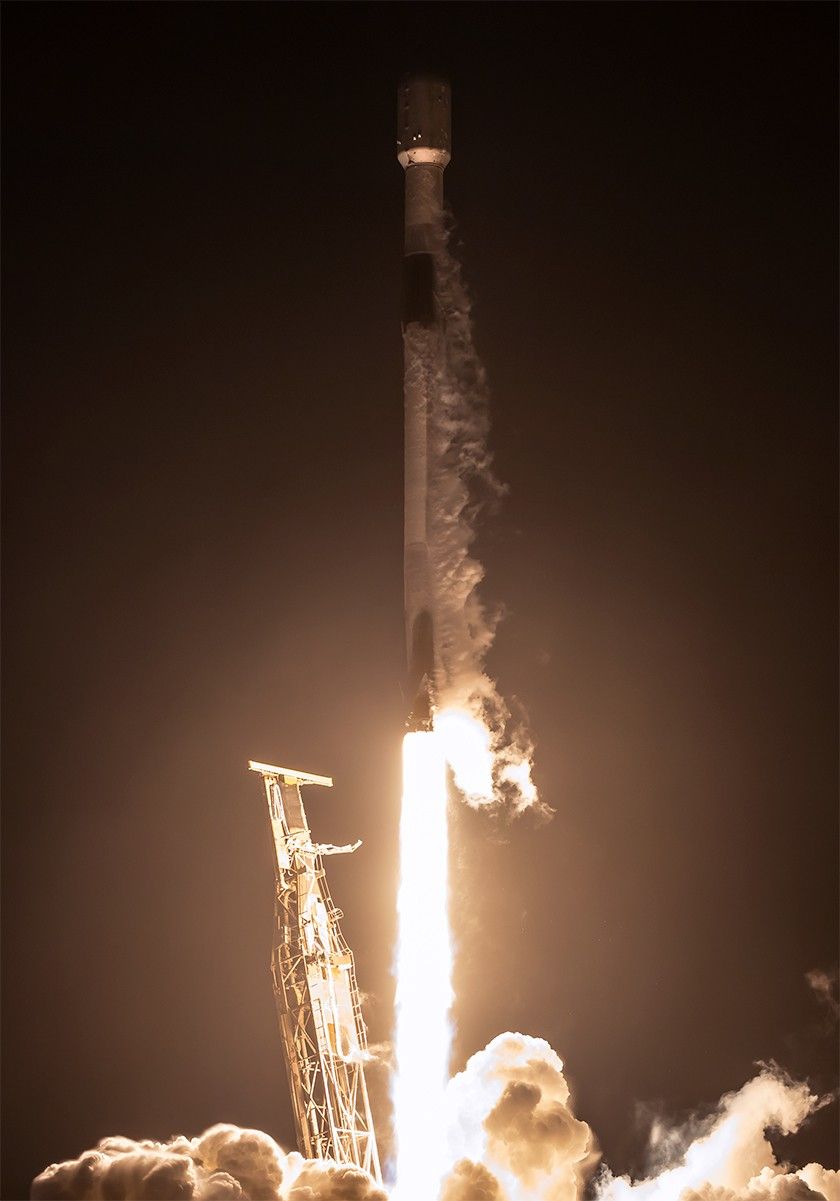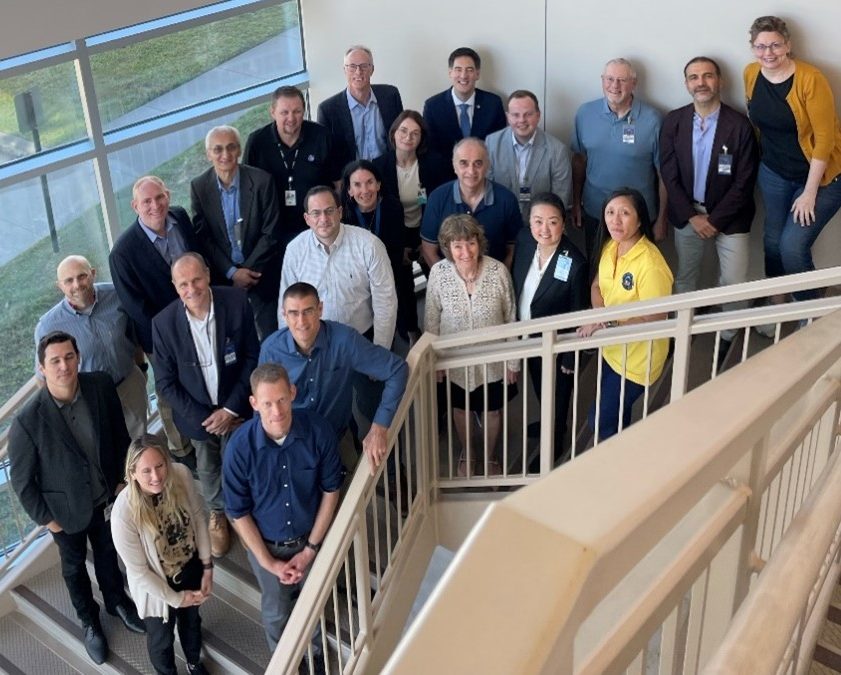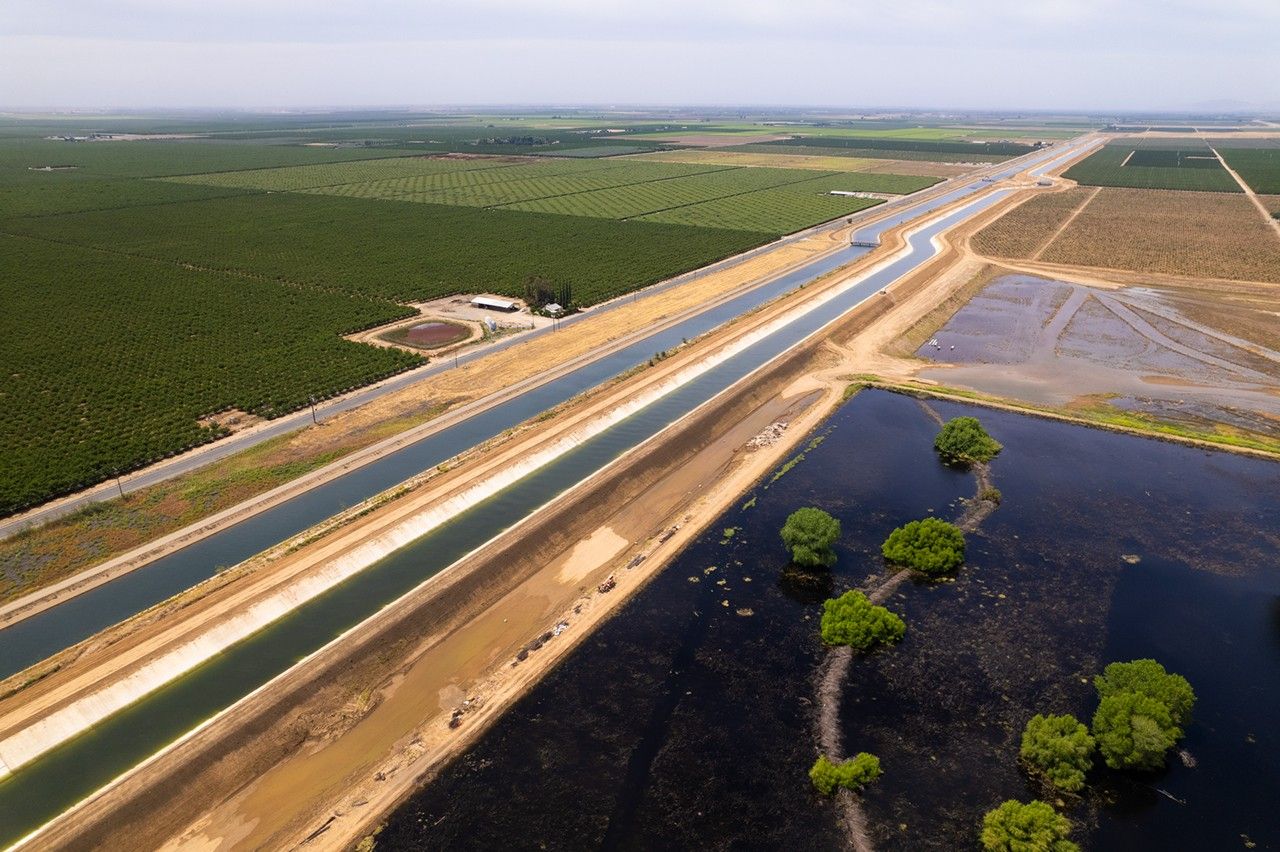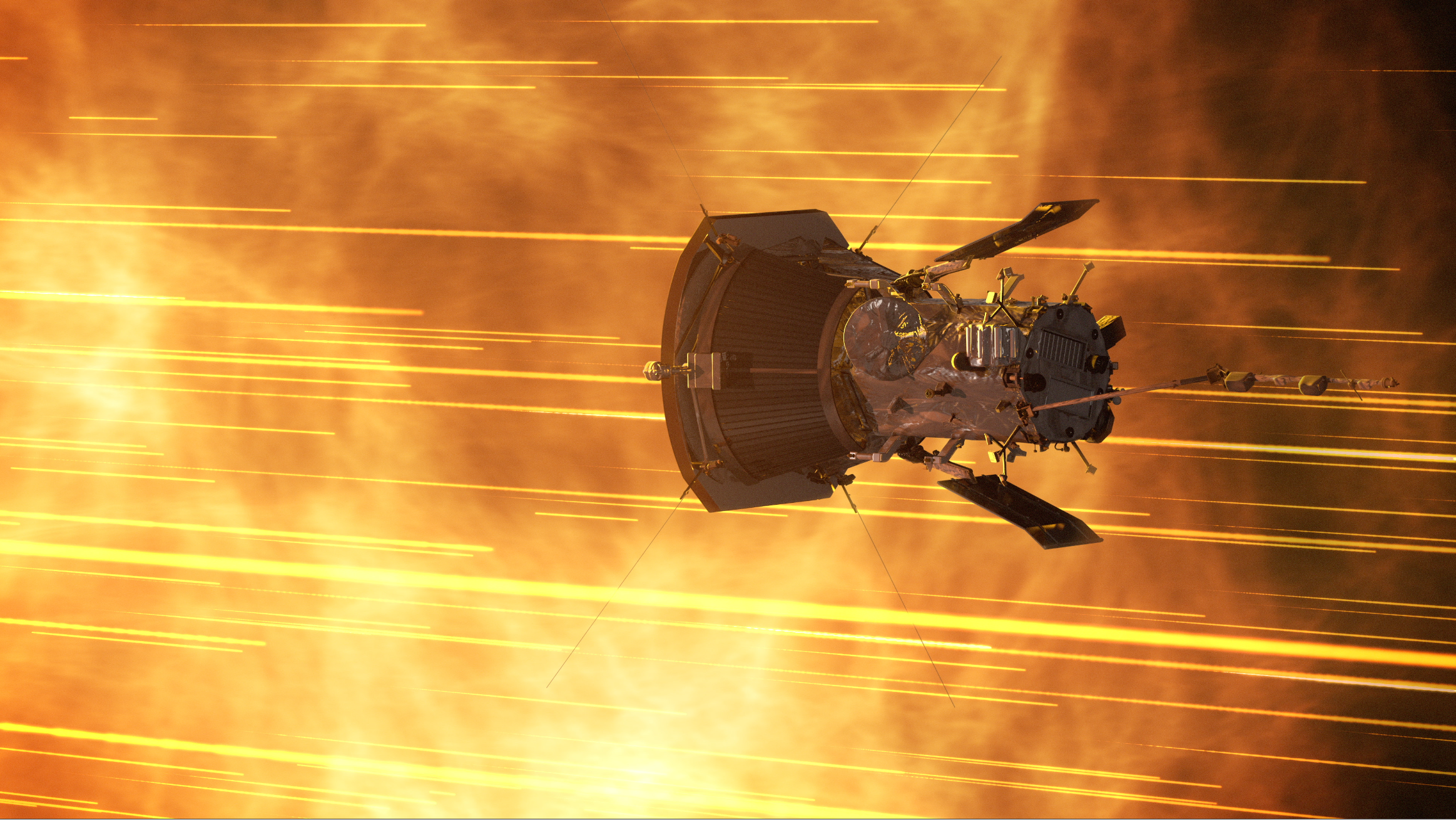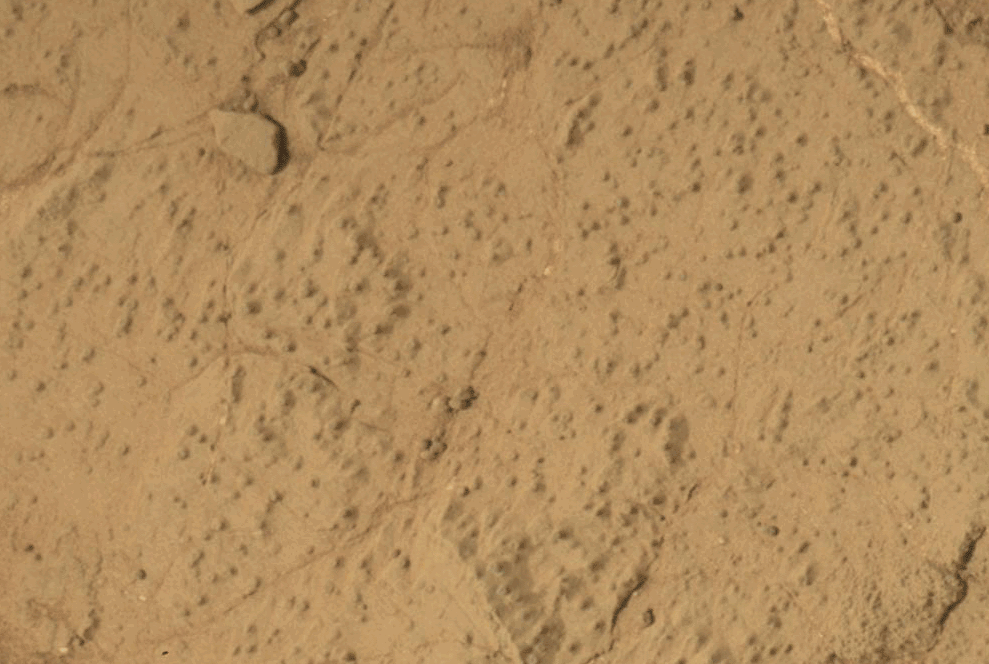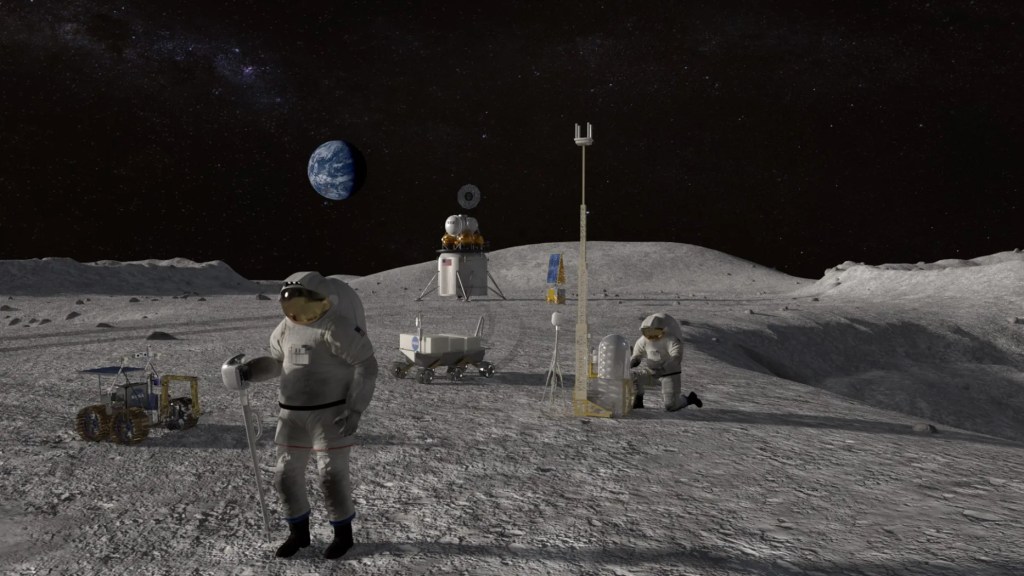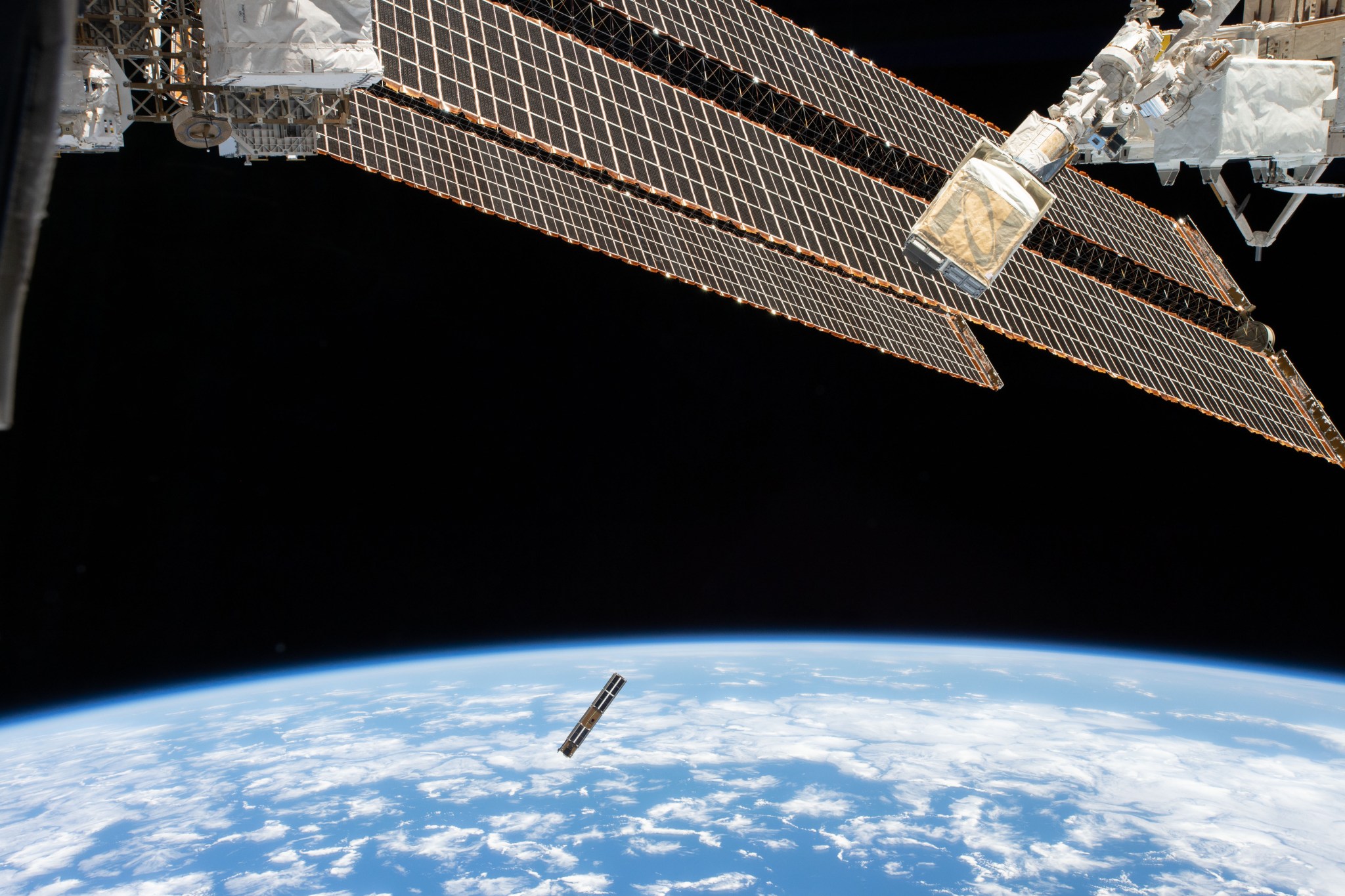NASA’s TechEdSat series of technology demonstrations aims to bring small payloads back to Earth or to the surface of Mars – while pushing the state of the art in a variety of CubeSat technologies and experiments.
TechEdSat is a series of collaborative projects and missions that pairs college and university students with NASA researchers to evaluate new technologies for use in small satellites, or CubeSats. Students do the hands-on work – designing, building, and testing CubeSat spacecraft systems and analyzing the results – for each flight mission, under mentorship of engineers at NASA’s Ames Research Center in California’s Silicon Valley.
CubeSat technologies enable the efficient use of small satellites for a variety of research and technological purposes, and the mission focus of the TechEdSat series is bringing small payloads from orbit back to Earth. Advancing the entry, descent, and landing, or EDL, systems for CubeSats – and sharing new technology with the spaceflight community – will allow more researchers access to cost-effective flight opportunities, leading to more technology testing and science in space.
For example, being able to send CubeSats from orbit to Earth could provide on-demand delivery of samples or hardware from the International Space Station or future space platforms. This technology could also allow future small spacecraft missions to reach the surface of Mars or other worlds in our solar system.
Some of the systems used to control the EDL of a spacecraft are somewhat like driving a car: they use braking, steering, and navigation systems to reach home. Unique to spaceflight is the need to mitigate the intense heating that comes from speeding though the atmosphere.
So far, all of the TechEdSat spacecraft have been intentionally burned up in Earth’s atmosphere at the end of their missions. These initial missions run tests at altitudes up to over 250 miles above Earth, working out the kinks of the first phases of EDL systems to make sure that the systems work and are safe. The ultimate goal is to develop a complete EDL system and eventually to land a CubeSat at a defined location on Earth.
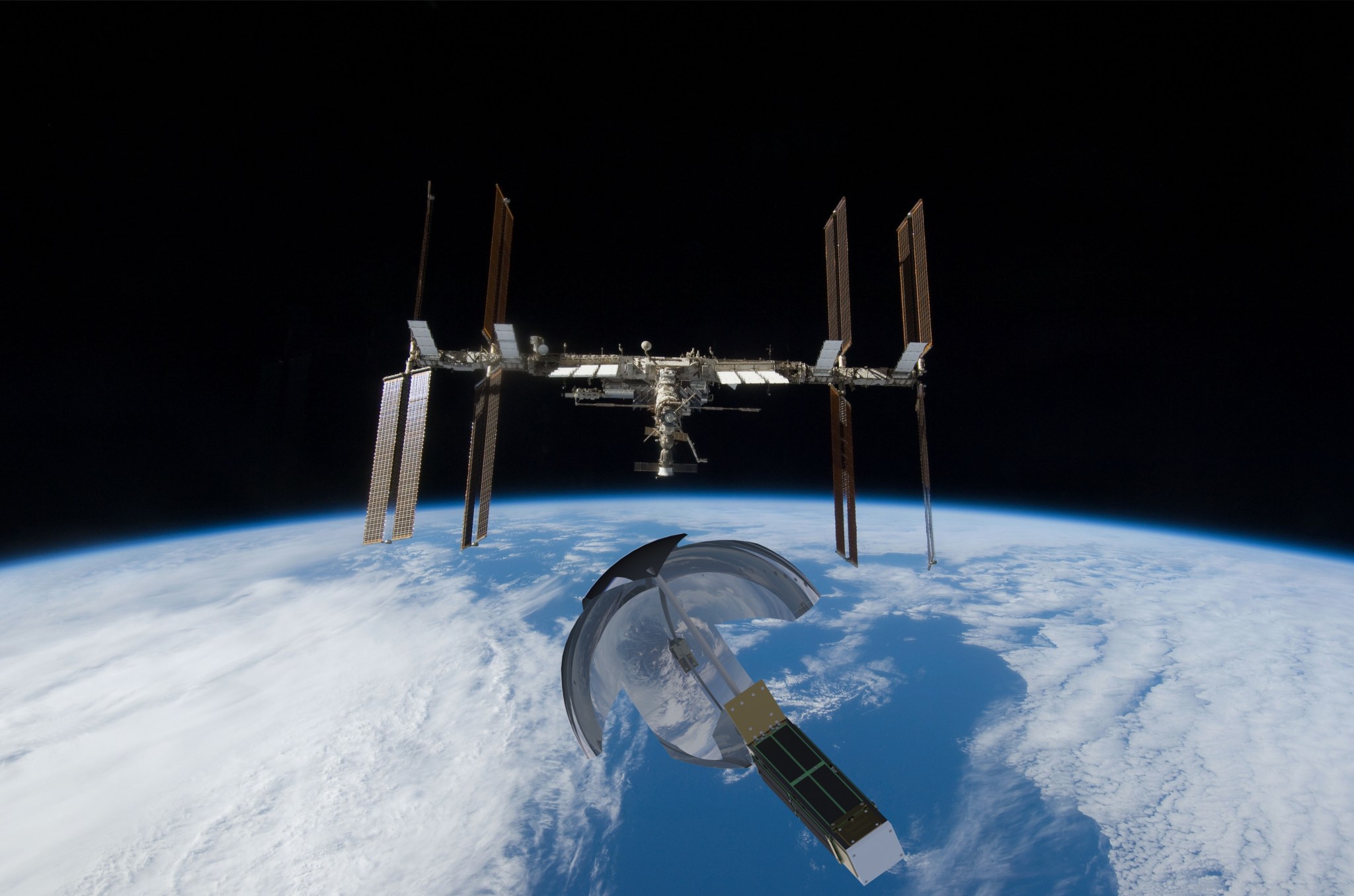
A variety of technologies are developed through TechEdSat missions, including the exo-brake. This new technology is a “wing” that can slow a spacecraft down and eventually allow it to return to the Earth, or potentially other worlds like Mars, in a controlled way. Foil constructions, using plastic and metal materials, origami-folded into designs that can expand, reshape, and be controlled by commands sent via space-to-space communication links. To facilitate this, the TechEdSat series is also advancing innovative solutions for communications in low-Earth orbit.
Current communications methods are expensive and too bulky for CubeSats, and the new technologies could allow researchers to extend these concepts to lunar and planetary missions, extending the capabilities of small satellites past low-Earth orbit. Also, recent innovations have allowed for much larger onboard processing power. Using graphic processor units that use electric analog circuits to mimic the human nervous system, known as or neuromorphic processors, adds much more “thinking” capability in these small boxes.
The next evolution of the TechEdSat project is the Nano-Orbital Workshop platform, or NOW, which includes collaboration from industry and other government organizations all working together at a rapid pace with the ability to have a high cadence of flight missions.
The ability to test these new technologies in space at such a low cost is made possible by the standardized systems inherent to the CubeSat concept, including the system that ejects them into space from larger spacecraft. The CubeSat platform has standard sizes for both satellites and their interfaces with deployment mechanisms, like a household plug and socket. Special dispensers help the CubeSats fit with the deployer on the space station and other vehicles. CubeSats come in various sizes, with the basic unit coming in a cube, roughly the size of a square tissue box and able to fit in your hand. CubeSats use a standard sizing scheme, where each 10-centimeter cube is considered one unit, or U. TechEdSat’s first mission was 1U in size, with recent missions expanding up to 6U.
Ames’ Role
NASA’s Ames Research Center in California’s Silicon Valley is home to the TechEdSat team, chartered to prototype novel solutions to technical spaceflight challenges by providing access to space. Student interns, young professionals, and volunteers supply labor and ingenuity and receive invaluable hands-on experience with real spaceflight hardware. By taking advantage of low-cost flights on balloons, sounding rockets, and orbital opportunities for small satellites, the TechEdSat series makes testing innovative technology in space more accessible. Satellites from the series have been launched directly from rockets, or with a stopover on the International Space Station.
Learn more:
- NASA podcast: Marc Murbach Talks About Building Small Cube Satellites (2017)
- NASA landing page: Ames Engineering Directorate
TechEdSat Missions
TechEdSat-1
TechEdSat-1 launched on the Japanese H-2 vehicle from the Tanegashima Launch Center July 21, 2012, and deployed from the International Space Station Oct. 4, 2012. The 1U CubeSat was the first U.S. CubeSat deployment from the space station. The mission evaluated space plug-and-play avionics, a way for researchers to use standardized systems to facilitate rapid software integration. The safety protocols followed for the jettison from the space station proved invaluable for future missions, and became standard practices for the space station as a launch platform. Communications were performed using amateur-band ultra high frequency receivers on the ground. The CubeSat functioned as intended for approximately six months before atmospheric re-entry May 5, 2013.
For researchers:
- TechEdSat-1 space station experiment page: Technology Education Satellite
- NASA publication: CubeSat 101: Basic Concepts and Processes for First-Time CubeSat Developers (2017)
TechEdSat-2
The TechEdSat-2 mission was launched on the first Antares rocket flight April 21, 2013, and deployed within a day. It wasn’t a standalone satellite, launching alongside Ames’ first PhoneSats. The primary experiment was to determine the utility of using the Iridium satellite constellation as the primary communication link for future nanosatellites, instead of using traditional ground stations. It proved that by using the “ground stations in the sky,” the command-and-control events for future nanosatellites could be greatly improved. The experiment was successfully concluded within 36 hours. Due to the elliptical orbit, the CubeSat re-entered the atmosphere shortly after.
TechEdSat-3p
TechEdSat-3p, weighing 11 pounds, was launched Aug. 3, 2013, on the Kounotori 4 flight mission from the Japanese Aerospace Exploration Agency. It was the first 3U CubeSat deployed from the space station in November 2013. This mission successfully performed the first passive flight test of an exo-brake. This real data could now be compared to calculated aerodynamic models for the very low-density thermosphere. It was the first time an Arduino-based processor was used in the series. The processor was found to function very well in the space radiation environment. Also, more data was acquired over different altitudes for the two-way Iridium satellite constellation communication link – thus adding confidence of this protocol for future CubeSats. The mission re-entered Earth’s atmosphere Jan. 16, 2014.
Learn more:
- NASA story: NASA Launched First Exo-brake Parachute from International Space Station (2013)
For researchers:
- TechEdSat-3p space station experiment page: The Development of On-Demand Sample Return Capability (SPQR)
TechEdSat-4
TechEdSat-4 launched July 13, 2014, weighing 11 pounds and 3U in size, and March 4, 2015, was the first NASA satellite to deploy into orbit from the space station via the NanoRacks CubeSat Deployer. The mission demonstrated improved satellite-to-satellite communications and an upgraded exo-brake system – two new technologies building on previous missions. These developments laid the groundwork for controlling an exo-brake in orbit and more frequent communications with the satellite, leading to more accurate satellite altitude and position predictions. The satellite’s structure, avionics, and payload were custom-designed by the TechEdSat-4 team to utilize its 3U volume. The hardware consisted mostly of off-the-shelf components, allowing for easily reproducible future flight variations. The satellite re-entered Earth’s atmosphere on April 3, 2015 after a four week de-orbit.
Learn more:
- NASA video: Space Station Live: TechEdSat-4 CubeSat Investigation (YouTube, 2014)
For researchers:
- TechEdSat-4 space station experiment page: The Development of On-Demand Sample Return Capability (SPQR)
- International Space Station technical page: NanoRacks CubeSat Deployer facility
- NASA technical fact sheet: TechEdSat-4: Nano-Satellite Series (2015)
- NASA technical page: TechEdSat-Technology Demonstration
TechEdSat-5
TechEdSat-5 launched Dec. 9, 2016, on Japan’s H-II Transfer Vehicle from Tanegashima Space Center in Japan. It deployed from the space station March 6, 2017. Weighing 11 pounds at 3.5 units, TechEdsat-5 used the first modulated exo-brake to target a predetermined re-entry point. Updated radio and global positioning system hardware took the place of wired connections in the satellite, operating as a wireless “data-crossroads” between TechEdSat-5’s key components. This had previously been verified by the team during a suborbital test flight, SOAREX-8, launched from NASA’s Wallops Flight Facility in Virginia. After almost five months of successful operations, the satellite re-entered Earth’s atmosphere July 29, 2017.
Learn more:
- NASA story: NASA’s Exo-brake ‘Parachute’ to Enable Safe Return for Small Spacecraft (2016)
For researchers:
- TechEdSat-5 space station experiment page: Development of On-Demand Sample Return Capability–Small Payload Quick Return
- NASA technical fact sheet: Technical Education Satellite Series: TechEdSat-5
TechEdSat-6
TechEdSat-6 launched to the space station Nov. 12, 2017, aboard the eighth Cygnus cargo resupply flight, from Wallops. Weighing 11 pounds at 3.5 units, TechEdSat-6 was released into low-Earth orbit from the NanoRacks platform Nov. 20, 2017. TechEdSat-6 tested a technology design intended toward an on-demand return of small payloads to Earth. Building off previous missions, TechEdSat-6 used improved software and designs including an updated exo-brake and modulation control. This is the fourth TechEdSat satellite carrying a version of the exo-brake to further demonstrate the necessary elements for guided, controlled re-entry of a CubeSat. On May 14, 2018, the satellite successfully re-entered Earth’s atmosphere.
Learn more:
- NASA feature story about TechEdSat-6: NASA to Test Advanced Space Wireless Network and Device for Returning Small Spacecraft to Earth (2017)
For researchers:
- TechEdSat-6 space station experiment page: The Development of On-Demand Sample Return Capability-Small Payload Quick Return
- NASA technical fact sheet: Technology Educational Satellite Series: TechEdSat-6
- NASA publication: Modulated Exo-brake Flight Testing
TechEdSat-7
The seventh mission in the series launched Jan. 17, 2021, and tested various technologies, including a novel fixed exo-brake. It was designed to pack the most drag into the smallest volume, primarily to rapidly de-orbit from high altitudes. In the future, this could be applied to rendezvous with a piece of debris, then use the exo-brake to dispose of it during reentry. One of the unique features of this new design is the opposing drag device struts, which rely on internal inflation to place them in the proper orientation.
In addition, TechEdSat-7 was the test flight of a new generation of the Tardigrade omni-board which serves as a power, communications, and control board for the TechEdSat series of missions. That board houses the central microprocessor and critical communication functions, the latter of which has greater radiation tolerance. Next, more data and complete statistics are being gathered regarding the efficacy of using the Iridium satellite constellation as a means to more quickly command and control nanosatellites. In addition, a high-power diode/laser communications tracking experiment helps identify the CubeSat, as well as allows optical ground stations to practice operations for upcoming communication systems.
This mission was part of a group of NASA-sponsored nanosatellites that flew on the first commercial launch of the Virgin Orbit air-launched rocket system.
Learn more:
- NASA story: TechEdSat-7’s Flight Mission Begins (2021)
TechEdSat-8
TechEdSat-8 launched to the space station Dec. 5, 2018, aboard the 16th SpaceX cargo resupply flight for NASA and deployed from the space station Jan 31, 2019. The first long 6U CubeSat developed by the team, TechEdSat-8 was designed to fit into a single NanoRacks CubeSat Deployer launch tube. Not only was it the heaviest TechEdSat mission at 13 pounds, it had more functions and capabilities than its predecessors, introducing a 150 watt-hour power system.
The CubeSat carried propulsion experiments and seven transmitters, including the Mars radio and lunar radio experiments, testing out radio communications technology for deep space destinations. By also using the NASA’s Near Earth Network, communication technologies tested during TechEdSat-8 could provide more communication opportunities or a back-up system for upcoming cis-lunar missions. The exo-brake was also designed to be larger, with more control capability than previous missions. The satellite re-entered the atmosphere April 20, 2020.
For researchers:
- TechEdSat-8 space station experiment page: The Development of On-Demand Sample Return Capability (SPQR) Technology Educational Satellite
TechEdSat-10
TechEdSat-10 launched to the International Space Station Feb. 15, 2020, aboard the 13th Cygnus cargo resupply flight for NASA, and deployed July 13, 2020. Building on the foundation provided by TechEdSat-8, this mission took many of those same technologies and enhanced them, with nine processors, a graphics processing unit, and more. TechEdSat-10 again used a long 6U design and featured an improved power system, making it the most powerful CubeSat at that size. In addition, it contained eight radios, four cameras – including a virtual reality camera experiment – and the largest iteration of exo-brake to date. It also featured the second flight of a more complex Tartigrade omni-board.
Learn more:
- NASA webinar: Topics in Advanced Communication and Design in the TES-n Nanosatellite Flight Series: Use of Iridium as a Primary Command/Control Gateway (2020)
- NASA image feature: TechEdSat-10 Deploys from the Space Station (2020)
For researchers:
- TechEdSat-10 space station experiment page: The Development of On-Demand Sample Return Capability (SPQR) Technology Educational Satellite
TechEdSat-13
TechEdSat-13 is planned to launch into low-Earth orbit in January 2022 and deploy from Virgin Orbit’s LauncherOne. This 3-unit CubeSat, weighing 6.6 pounds, is packed with technologies to test novel capabilities in flight. This includes an Artificial Intelligence / Machine Learning (AI/ML) subsystem featuring the Intel Loihi neuromorphic processor. Loihi is an advanced silicon chip that mimics the function of the human brain. TechEdSat-13 will run the first orbital flight tests of this chip and the AI/ML subsystem. It will set the stage for many different science and engineering applications of AI/ML for space platforms in the future.
TechEdSat-13 also will test an improved avionics core and a communications system that will be used to support upcoming TechEdSat flight experiments. This includes an initial test of an experiment – as part of the Cognitive Communication project at NASA’s Glenn Research Center in Cleveland – making orbit-to-ground data transfer more efficient. This capability, called User Initiated Service, or UIS, allows a spacecraft to schedule on-demand communications services with a ground station or space relay. UIS reduces the burden on mission operators and improves the service scheduling response time. A communication protocol and sensor suite using internal WiFi also will be tested, further enabling larger datasets to be acquired, processed, and downlinked.
TechEdSat-13 will conduct an optical tracking and identification experiment to better keep track of nano-satellites in orbit. Additionally, TechEdSat-13 will demonstrate a novel exo-brake deployment system for rapid de-orbit and disposal for future use to help mitigate orbital debris concerns. This effort also helps to set the stage for autonomous navigation for nano-satellites to drop from orbit and reach their planned destination on Earth.
Partners:
- TechEdSat is supported by the Ames Engineering Directorate, the Ames Safety and Mission Assurance Directorate, the Ames Chief Technologist Office Center Innovation Fund, and the National Oceanic and Atmospheric Agency.
- TechEdSat and the exo-brake were funded by the Entry Systems Modeling project within NASA’s Space Technology Mission Directorate’s Game Changing Development program and the NASA Engineering and Safety Center.
For TechEdSat-7, TechEdSat-8, and TechEdSat-10:
- Launches were supported by NASA’s CubeSat Launch Initiative’s Educational Launch of Nanosatellites, managed by the Launch Services Program at NASA’s Kennedy Space Center in Florida.
For TechEdSat-13:
- Support is provided by the Cognitive Communication project at Glenn that is funded by NASA’s Space Communication and Navigation (SCaN) program at NASA Headquarters.
- Further support is provided by the Radiation Tolerant Neuromorphic Processor project at Ames and the Ames Exploration Technology Directorate.
- Spacecraft integration was funded by NASA’s Small Spacecraft Technology program.
- The Loihi processor that will be launched into space was provided by the Air Force Research Laboratory (AFRL) Information Directorate.
- Exploration Institute, LLC of Cheyenne, Wyoming and Brisk Computing, LLC of Centerville, Ohio provided software for both the AI/ML experiments and related interface. The companies’ software was developed with support from the NASA Small Business Innovation Research and Small Business Technology Transfer (SBIR/STTR) program.
- The launch is provided by the U.S. Department of Defense Space Test Program.
TechEdSat is supported by the participation of students from the following institutions:
- California Polytechnic State University in San Luis Obispo, California
- San Jose State University in California
- International Space University in Illkirch-Graffenstaden, France
- Smith College in Northampton, Massachusetts
- University of Idaho in Moscow
- University of California, Davis
- University of California, Riverside
- University of Florida in Gainesville
For news media:
Members of the news media interested in covering this topic should reach out to the NASA Ames newsroom.

